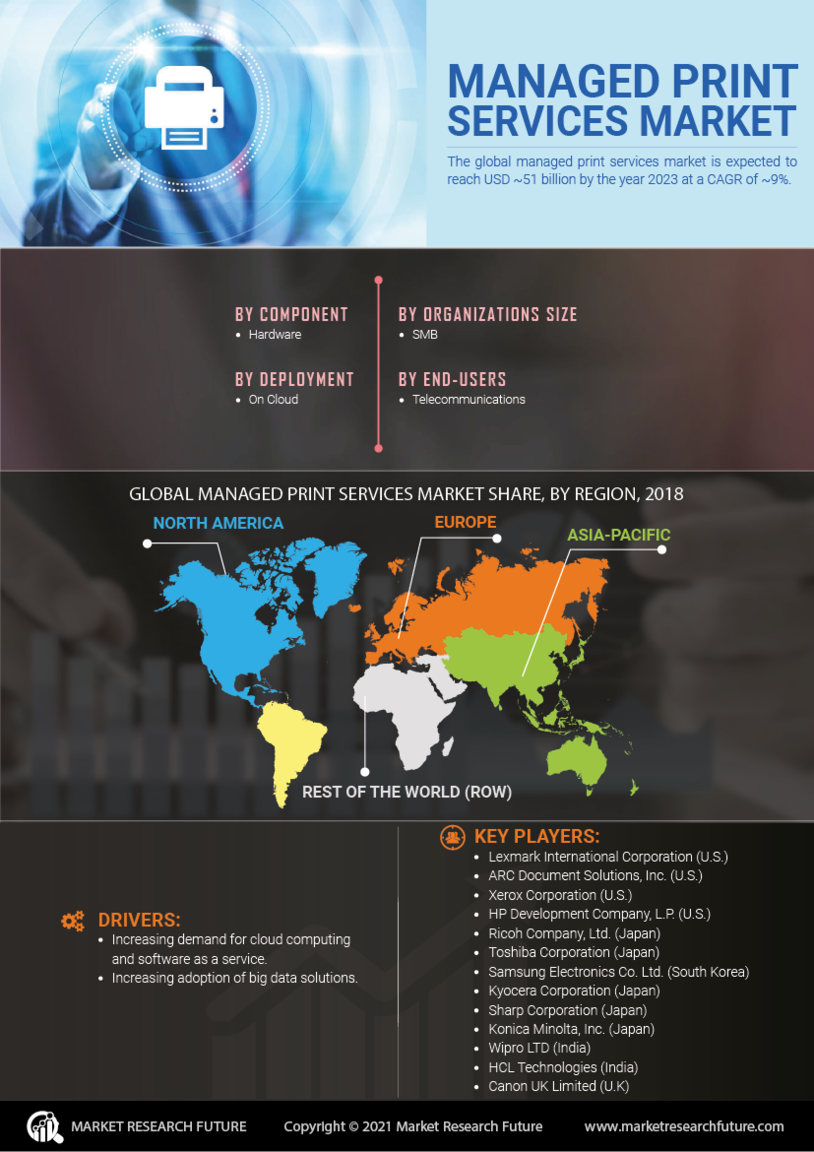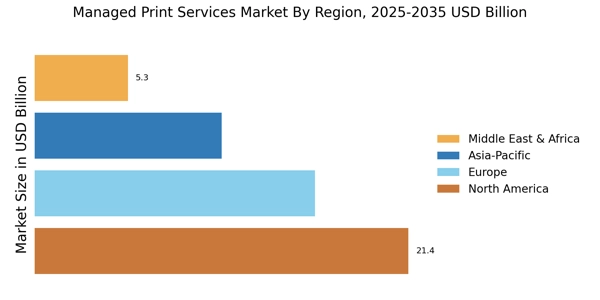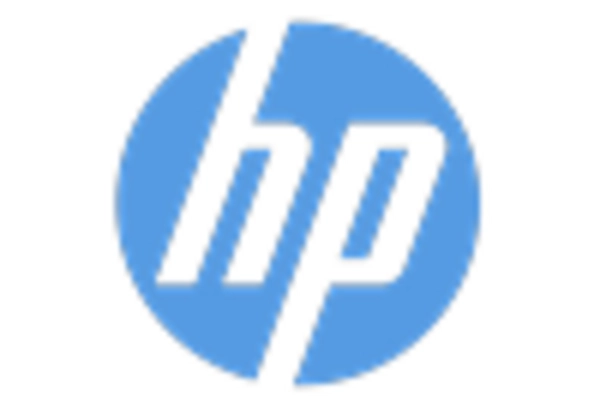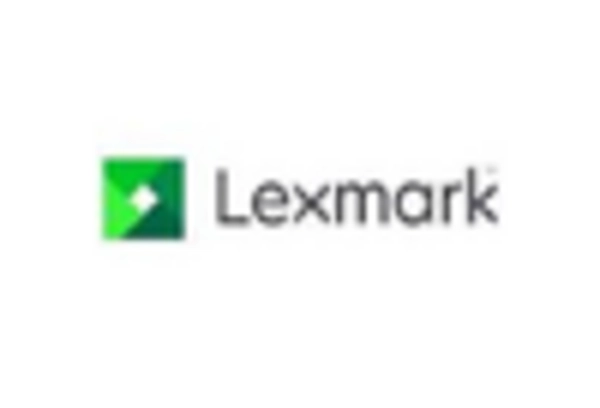Regulatory Compliance
The Managed Print Services Market is influenced by the growing need for regulatory compliance among organizations. Various industries are subject to stringent regulations regarding data handling, privacy, and environmental impact. Managed print services can assist organizations in meeting these compliance requirements by providing secure document management and environmentally friendly printing practices. For example, industries such as healthcare and finance face strict regulations that necessitate the protection of sensitive information. By adopting managed print services, organizations can ensure that their printing processes align with regulatory standards, thereby reducing the risk of non-compliance penalties. As the regulatory landscape continues to evolve, the demand for managed print services is expected to rise, as businesses seek solutions that facilitate compliance while enhancing operational efficiency.
Focus on Data Security
The Managed Print Services Market is increasingly shaped by the focus on data security. With the rise of cyber threats and data breaches, organizations are prioritizing the protection of sensitive information. Managed print services offer robust security features, including secure printing, user authentication, and data encryption. These measures help mitigate risks associated with unauthorized access to printed documents. Recent studies suggest that organizations implementing managed print services experience a significant reduction in security vulnerabilities. As businesses become more aware of the potential consequences of data breaches, the demand for secure print solutions is likely to increase. This trend underscores the importance of integrating security measures into print management strategies, positioning managed print services as a critical component of comprehensive data protection efforts.
Technological Advancements
The Managed Print Services Market is significantly influenced by rapid technological advancements. The integration of innovative technologies, such as cloud computing, artificial intelligence, and IoT, is transforming the landscape of print management. These advancements enable organizations to streamline their printing processes, enhance efficiency, and improve overall productivity. For instance, cloud-based managed print services allow for remote management and monitoring of print devices, facilitating better resource allocation. Additionally, the use of AI can optimize print workflows by predicting usage patterns and automating tasks. As organizations increasingly adopt these technologies, the demand for managed print services is expected to grow. The ability to leverage cutting-edge solutions not only enhances operational efficiency but also positions businesses to remain competitive in a rapidly evolving market.
Environmental Sustainability
The Managed Print Services Market is witnessing a notable shift towards environmental sustainability. Organizations are increasingly aware of their ecological footprint and are seeking solutions that align with their sustainability goals. Managed print services contribute to this effort by promoting responsible printing practices, such as reducing paper waste and energy consumption. Data indicates that companies utilizing managed print services can decrease paper usage by approximately 20 to 40%. This reduction not only benefits the environment but also enhances the corporate image of organizations committed to sustainability. As businesses strive to meet regulatory requirements and consumer expectations regarding environmental responsibility, the adoption of managed print services is likely to rise. This trend reflects a broader commitment to sustainable practices, positioning managed print services as a key player in the transition towards greener business operations.
Cost Efficiency and Budget Control
The Managed Print Services Market is increasingly driven by the need for cost efficiency and budget control among organizations. Companies are seeking ways to reduce operational costs, and managed print services offer a viable solution. By consolidating printing resources and optimizing workflows, businesses can achieve substantial savings. According to recent data, organizations that implement managed print services can reduce printing costs by up to 30%. This financial incentive is compelling, as it allows companies to allocate resources more effectively. Furthermore, the ability to monitor and manage print usage in real-time enhances budgetary control, making it easier for organizations to identify areas for further savings. As a result, the demand for managed print services continues to grow, as businesses recognize the potential for improved financial performance through strategic print management.


















Leave a Comment